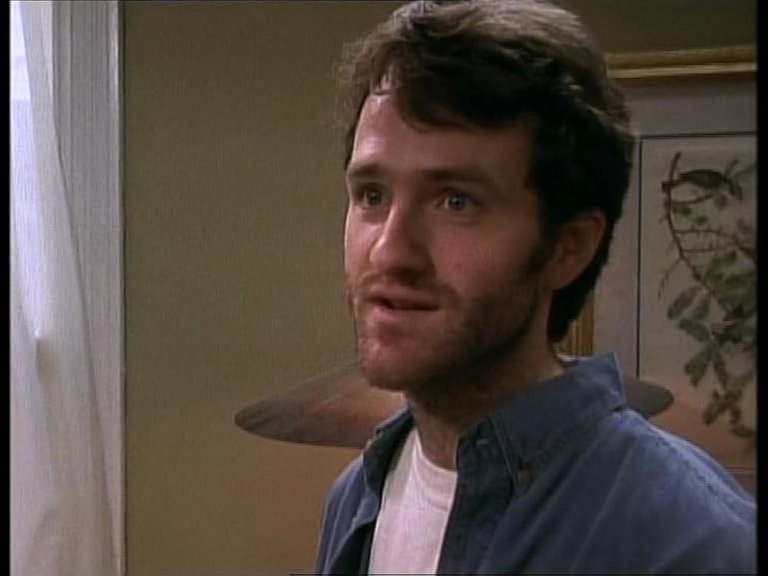Television Review: Stakeout (Homicide: Life on the Street, S4X15, 1996)

Stakeout (S04E15)
Airdate: 15 March 1996
Written by: Noel Behn
Directed by: John McNaughton
Running Time: 47 minutes
The episodes of Homicide: Life on the Street that endure as exemplars of the series’ brilliance are those that balance narrative complexity, character depth, and thematic resonance without sacrificing any one element to the others. Stakeout, the fourth-season instalment written by Noel Behn and directed by series veteran John McNaughton, stands as a prime example of this approach. By intertwining a gripping procedural plot with intimate character studies and incisive social commentary, the episode transcends the typical constraints of crime drama, offering a multifaceted exploration of guilt, responsibility, and the human cost of violence. Its strength lies in its ability to treat the investigation as both a catalyst and a backdrop, allowing the show’s ensemble to breathe with authenticity while confronting moral and existential questions.
The episode opens with one of the most memorable cold opens in television history, a sequence that immediately establishes its thematic ambition. A young male prostitute, arrested in Baltimore with drugs and stolen goods, offers a confession that implicates himself in a series of brutal killings of runaway teenage boys—a crime that would likely carry a harsher sentence than the minor charges he faces. This act of self-sabotage prompts Detective Tim Baylisss to deliver the line, “Crime makes you stupid,” a wry yet profound observation on the irrationality of criminal behaviour. The line cuts through the clichés of crime fiction, where perpetrators are often portrayed as cunning or tragic figures, to highlight the absurdity of choices that escalate violence unnecessarily.
The investigation that follows, however, is far from conventional. The prostitute’s testimony leads detectives to a grave site and the name of the orchestrator. Unlike many procedurals, Stakeout does not linger on the mystery of identifying the killer, who is known from the start. Instead, the focus shifts to the Homicide Unit’s efforts to apprehend him. Liutenant Giardello order a stakeout at killer’s home, assigning detectives to monitor the property from a neighbouring house owned by George and Cathy Buxton (played by Jim True and Kate Walsh). This setup transforms the episode into a slow-burn character study, as the detectives rotate shifts, sharing reflections on the case, their personal lives, and past traumas. The stakeout becomes a microcosm of the series’ ethos: a space where the mundane and the profound collide, revealing the emotional toll of policing a broken system.
While the case itself—a fictionalised nod to the real-life Dean Corll killings of the 1970s—is serviceable but unremarkable, its true value lies in how it illuminates the detectives’ inner lives. The murder mystery, with its convenient red herrings and predictable twists, serves as a framework for deeper exploration. The prolonged stakeout allows for extended dialogue among the team, enabling writer Behn to weave in exposition seamlessly. For instance, Bayliss grapples with the unresolved guilt over the Adena Watson case, compounded by the recent death of suspect Risley Tucker. His contemplation of quitting the force underscores the show’s recurring theme of moral exhaustion, while Giardello’s struggle to balance duty with his daughter’s impending wedding adds a layer of personal conflict. These moments are not mere filler; they ground the procedural elements in emotional truth, making the characters’ professional choices feel weighty rather than transactional.
Two characters receive particular attention in Stakeout: Bayliss and Giardello. Bayliss’s arc is marked by introspection, as he confronts the limits of justice and his own capacity for redemption. His interactions with colleagues reveal a man torn between cynicism and hope, a tension that defines his role as the show’s moral compass. Giardello’s subplot, meanwhile, is a masterclass in understated drama. Tasked with overseeing the stakeout, he postpones a trip to San Francisco for his daughter’s wedding, partly due to professional obligation but also because of his own reluctance to meet his new in-law. When he finally attempts to fly out, a fog delay strands him in Baltimore—a metaphor for the inescapable pull of duty and regret.
Equally compelling is the subplot involving George and Cathy Buxton. George, a formerly employed man now adrift in self-pity and drinking, clashes with his working wife Cathy, whose resilience contrasts sharply with his passivity. Their strained marriage—a microcosm of societal tensions around gender roles and economic precarity—is rendered with sharp wit and pathos. True and Walsh deliver performances that hint at broader arcs, their dynamic foreshadowing the actors’ later triumphs (True as Roland Pryzbylewski in The Wire, Walsh in Grey’s Anatomy and 9-1-1).
If Stakeout has a flaw, it lies in an anachronistic continuity error involving Giardello’s smoking habit. Earlier seasons established him as an avid cigar smoker, yet here he insists that he was never a smoker. While minor, this inconsistency jars with the show’s meticulous attention to character detail. Such a misstep is jarring in an otherwise tight script, though it does not detract significantly from the episode’s overall impact.
Stakeout is a masterful example of Homicide: Life on the Street’s unique strength: its ability to marry procedural thrills with profound humanism. Noel Behn’s sharp writing and McNaughton’s assured direction ensure that even as the story unfolds predictably, the emotional resonance of its characters—detectives, suspects, and civilians alike—leaves a lasting impression. The cold open’s bleak observation about criminal stupidity becomes a throughline, reminding viewers that the true horror lies not in the actions of a lone killer, but in the systemic failures and personal frailties that allow such tragedies to unfold.
RATING: 8/10 (+++)
Blog in Croatian https://draxblog.com
Blog in English https://draxreview.wordpress.com/
InLeo blog https://inleo.io/@drax.leo
Hiveonboard: https://hiveonboard.com?ref=drax
Rising Star game: https://www.risingstargame.com?referrer=drax
1Inch: https://1inch.exchange/#/r/0x83823d8CCB74F828148258BB4457642124b1328e
BTC donations: 1EWxiMiP6iiG9rger3NuUSd6HByaxQWafG
ETH donations: 0xB305F144323b99e6f8b1d66f5D7DE78B498C32A7
BCH donations: qpvxw0jax79lhmvlgcldkzpqanf03r9cjv8y6gtmk9
Posted Using INLEO